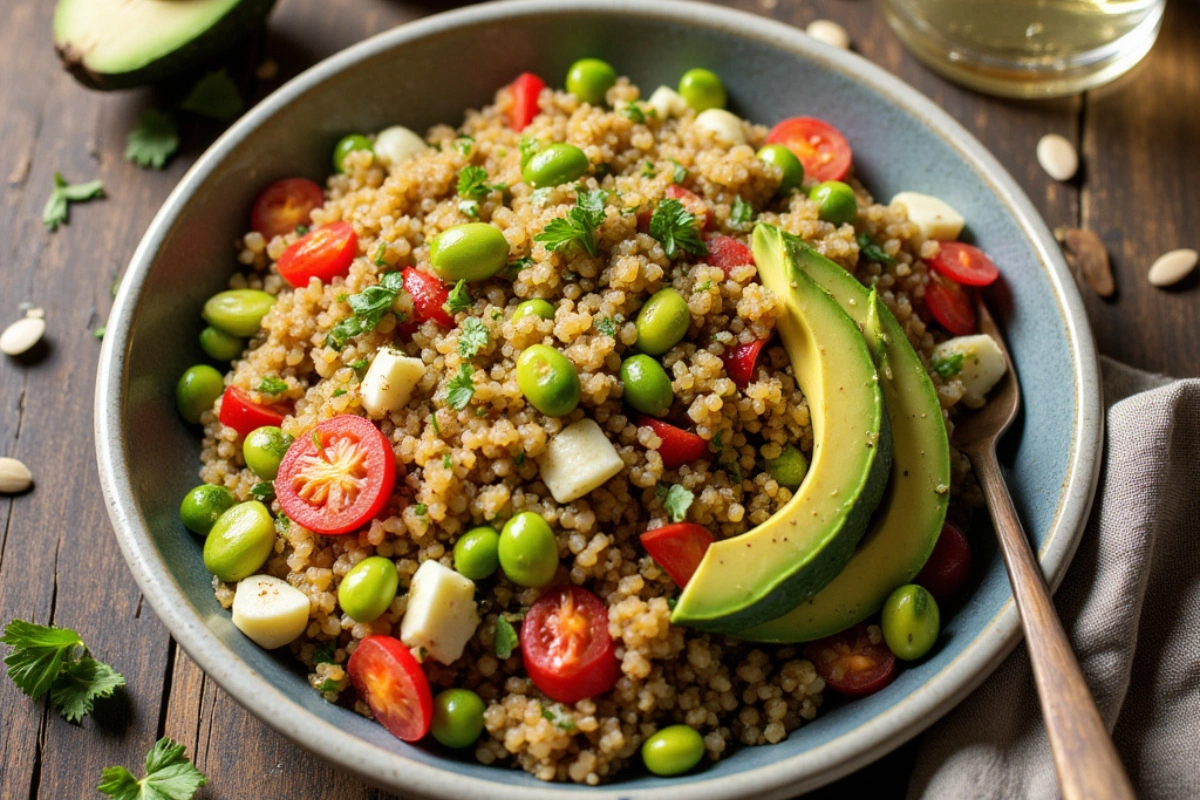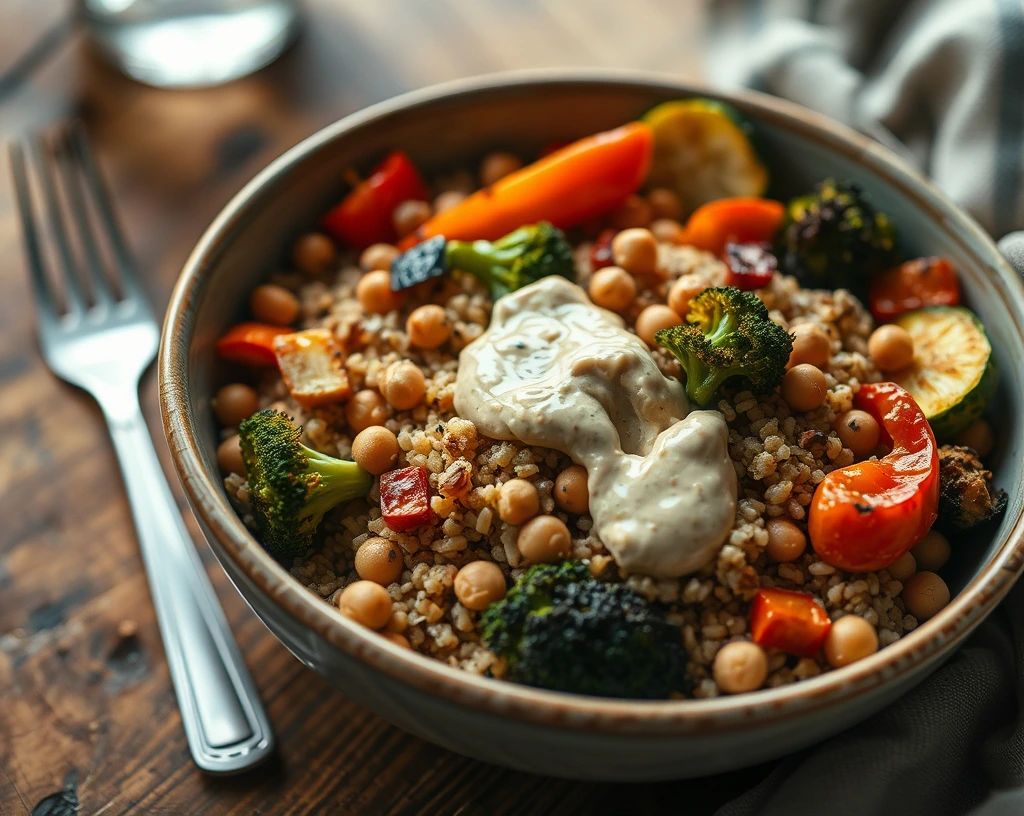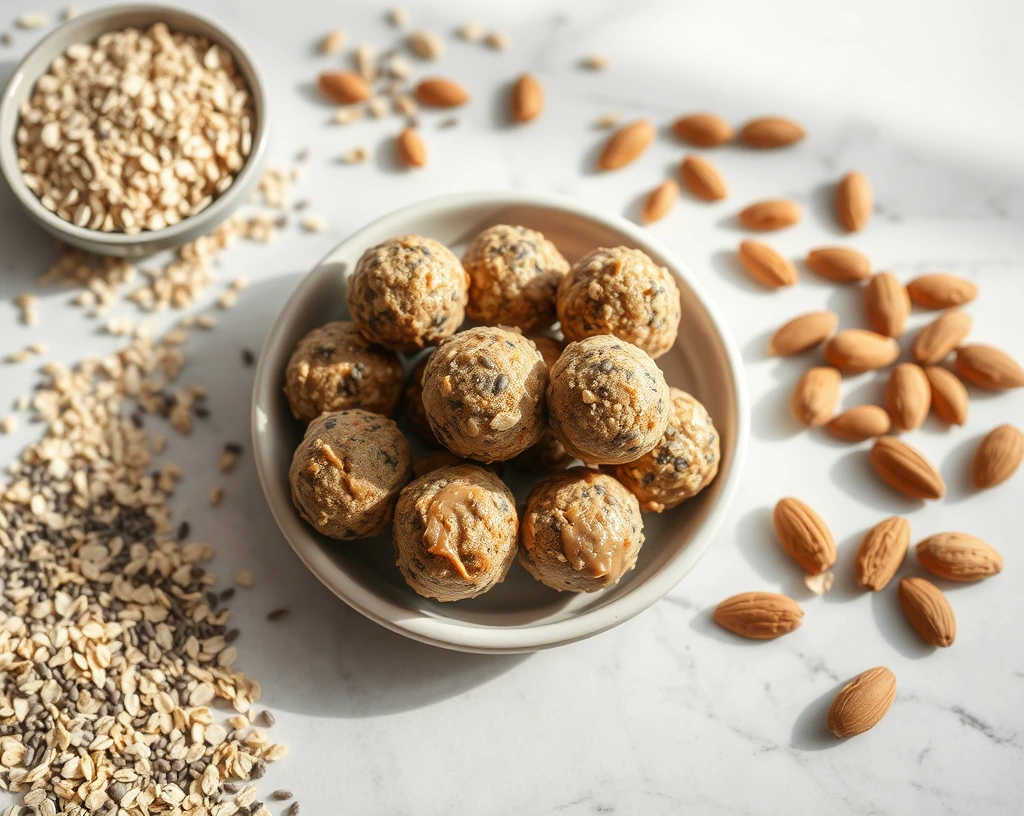Is it Possible to Be Vegan and Gluten-Free?
Living a vegan and gluten-free lifestyle might seem like an uphill battle at first glance, but it’s entirely possible—and healthier than you think! By understanding these dietary approaches, you can create a sustainable lifestyle that fits your nutritional needs without compromising taste or variety. Many practical ideas and resources, such as those in vegan gluten-free recipes, demonstrate how to make this lifestyle accessible.
In this article, we’ll explore the intersection of veganism and gluten-free diets, focusing on practical tips, nutritional advice, and a sprinkle of inspiration for your journey. For further insights into meal ideas that align with these dietary approaches, refer to 15 best gluten-free vegan recipes, which offer a variety of creative options.
Introduction to Veganism and Gluten-Free Diets
What Does It Mean to Be Vegan?
A vegan diet avoids all animal-derived products, including meat, dairy, eggs, and even honey. People choose veganism for ethical, environmental, and health reasons. This diet revolves around plant-based foods, such as fruits, vegetables, legumes, nuts, seeds, and grains. It’s more than just a diet—it’s a lifestyle promoting kindness and sustainability.
What Is a Gluten-Free Diet?
A gluten-free diet eliminates foods containing gluten, a protein found in wheat, barley, rye, and their derivatives. For individuals with celiac disease or gluten sensitivity, avoiding gluten is crucial for maintaining health. Gluten can hide in unexpected places, so it’s important to read labels carefully.
Can You Combine These Diets?
Absolutely! A vegan and gluten-free lifestyle might sound restrictive, but they overlap more than you’d think. While some staples like wheat and bread are off-limits, plenty of naturally gluten-free, plant-based foods are available. Foods like quinoa, legumes, and fresh vegetables are excellent examples of ingredients that fit both diets, as seen in vegan Mediterranean recipes.
By focusing on whole foods and mindful planning, you can meet your dietary needs and enjoy delicious meals. Recipes such as those highlighted in vegan gluten-free recipes showcase how these two dietary approaches can work seamlessly together.
Challenges and Benefits of Vegan and Gluten-Free Living
Combining these diets does require effort. Many processed vegan foods may contain gluten, and some gluten-free products include animal-derived ingredients. However, the benefits are substantial: improved digestion, reduced inflammation, and alignment with ethical or environmental goals. Insights into combining these diets effectively can be seen in vegan gluten-free recipes, which provide guidance on navigating such challenges.
Plus, by embracing whole, plant-based foods, you can avoid common pitfalls like over-processing. Recipes like those in healthy vegan and gluten-free dishes offer creative ways to build a balanced diet while minimizing reliance on heavily processed products
Nutritional Considerations for a Vegan and Gluten-Free Diet
Ensuring Balanced Nutrition
Following a vegan and gluten-free diet requires careful planning to ensure balanced nutrition. Essential nutrients like protein, iron, calcium, and B12 need extra attention since these diets can exclude common sources of these nutrients. By focusing on a variety of whole foods, you can create a diet that is both satisfying and nutrient-rich. Adding fortified foods, like plant-based milks and cereals, can also help meet your dietary needs.
Protein Sources for Vegan and Gluten-Free Diets
Many people worry about getting enough protein on a vegan and gluten-free diet, but rest assured, there are plenty of options:
- Legumes: Lentils, chickpeas, and black beans are high in protein and naturally gluten-free.
- Tofu and Tempeh: Versatile soy-based proteins perfect for stir-fries, salads, and sandwiches.
- Quinoa: A complete protein and a gluten-free grain that works in bowls or as a rice substitute.
- Nuts and Seeds: Almonds, chia seeds, flaxseeds, and sunflower seeds pack a protein punch.
By rotating these protein-rich options, you can keep your meals interesting and nutrient-dense.
Vitamin and Mineral Considerations
Meeting your vitamin and mineral needs is crucial for maintaining energy and overall health. For example:
- B12: Since it’s not naturally present in plant-based foods, look for fortified products or take a supplement.
- Iron: Found in leafy greens, beans, and lentils, but pairing these foods with vitamin C sources (like citrus fruits) boosts absorption.
- Calcium: Get this vital mineral from fortified plant-based milks, almonds, tahini, and dark leafy greens like kale.
Gluten-Free Grains for Vegans
One of the best things about being gluten-free and vegan is the variety of naturally gluten-free grains available:
- Quinoa: High in protein and cooks quickly.
- Buckwheat: Perfect for pancakes or porridge, despite its misleading name.
- Millet: A mild-tasting grain that’s great for salads or as a rice substitute.
- Sorghum: Rich in antioxidants and fiber, ideal for baking or side dishes.
Creating a Sustainable Vegan and Gluten-Free Lifestyle
Easy-to-Find Vegan and Gluten-Free Foods
Living a vegan and gluten-free lifestyle doesn’t mean you have to sacrifice convenience or variety. Many plant-based and naturally gluten-free foods are readily available:
- Whole Foods: Fruits, vegetables, legumes, nuts, and seeds form the foundation of your diet.
- Packaged Products: Look for items labeled as both vegan and gluten-free, such as crackers, breads, and pasta.
- Alternative Flours: Use almond, coconut, or rice flour for baking and cooking.
Shopping in the produce and bulk sections of grocery stores is an excellent way to keep your pantry stocked with fresh, versatile ingredients.
Tips for Dining Out as a Vegan and Gluten-Free
Navigating restaurants can be tricky, but with a little preparation, it’s manageable:
- Do Your Research: Check menus online before visiting a restaurant to identify vegan and gluten-free options.
- Ask Questions: Politely inquire about ingredients and cooking methods to avoid hidden gluten or animal-derived products.
- Communicate Clearly: Let your server know about both dietary restrictions upfront to avoid confusion.
Dining out doesn’t have to be stressful. With these tips, you can enjoy meals outside your home with confidence.
Budget-Friendly Vegan and Gluten-Free Options
Eating vegan and gluten-free on a budget is easier than it seems. Here’s how:
- Buy in Bulk: Legumes, rice, quinoa, and nuts are cost-effective when purchased in larger quantities.
- Stick to Seasonal Produce: Fresh fruits and vegetables are cheaper and taste better when they’re in season.
- Make Your Own Staples: Prepare hummus, nut milk, or gluten-free bread at home to save money and reduce processed foods.
Common Mistakes and How to Avoid Them
Combining vegan and gluten-free diets has its pitfalls, but they’re avoidable:
- Overloading on Processed Foods: Many pre-packaged items are convenient but may lack nutritional value.
- Ignoring Hidden Gluten: Watch for gluten in unexpected places, like sauces, dressings, and spices.
- Skipping Nutritional Planning: Always ensure your meals include a variety of food groups to avoid deficiencies.
By focusing on whole, minimally processed foods and staying vigilant about labels, you can avoid these common mistakes.
Sample Meal Plan and Recipes
Creating delicious meals that are both vegan and gluten-free doesn’t have to be a challenge. Here’s a detailed meal plan with easy-to-follow recipes to get you started.
Vegan and Gluten-Free Breakfast Ideas
Chia Pudding with Fresh Berries
Ingredients:
- 3 tablespoons chia seeds
- 1 cup almond milk (or any plant-based milk)
- 1 tablespoon maple syrup (optional)
- Fresh berries (strawberries, blueberries, or raspberries)
- 1 teaspoon vanilla extract
Instructions:
- Mix chia seeds, almond milk, maple syrup, and vanilla extract in a jar or bowl.
- Stir well to prevent clumping and let it sit for 10 minutes.
- Stir again and refrigerate overnight.
- Top with fresh berries before serving.
Lunch and Dinner Options
Quinoa Veggie Bowl
Ingredients:
- 1 cup cooked quinoa
- 1 cup roasted vegetables (zucchini, bell peppers, and broccoli)
- ½ cup chickpeas (cooked or canned)
- 2 tablespoons tahini
- 1 tablespoon lemon juice
- Salt and pepper to taste
Instructions:
- Arrange cooked quinoa in a bowl as the base.
- Add roasted vegetables and chickpeas on top.
- In a small bowl, mix tahini, lemon juice, salt, and pepper to make a dressing.
- Drizzle dressing over the bowl and enjoy.
Snacks and Desserts
Energy Balls
Ingredients:
- 1 cup gluten-free oats
- ½ cup almond butter
- ¼ cup maple syrup
- 2 tablespoons chia seeds
- 1 teaspoon vanilla extract
Instructions:
- Mix all ingredients in a bowl until combined.
- Roll the mixture into small balls using your hands.
- Refrigerate for at least 30 minutes before serving.
Nutritional Content (Per 100g)
Is It Healthy to Be Both Vegan and Gluten-Free?
Yes, being both vegan and gluten-free can be healthy when done correctly. By focusing on a variety of whole, plant-based foods, you can meet your nutritional needs while enjoying the benefits of both diets. These benefits include improved digestion, reduced inflammation, and increased energy levels. However, careful planning is essential to ensure your diet is balanced and nutrient-dense.
Can You Get Enough Protein on a Vegan and Gluten-Free Diet?
Absolutely! Protein is abundant in plant-based and gluten-free foods. Incorporating options like legumes, tofu, quinoa, nuts, and seeds into your meals ensures adequate protein intake. For instance, chickpeas and quinoa are both high-protein options that work well together, as seen in recipes like those featured in vegan Mediterranean dishes.
Combining these foods in creative ways also keeps your diet enjoyable and diverse. Adding chia seeds to smoothies or including lentils in soups provides a protein boost while keeping meals flavorful and satisfying. More ideas for protein-packed dishes can be found in vegan gluten-free recipes, which showcase how to build balanced, nutrient-dense meals.
.
How Do You Avoid Cross-Contamination?
Avoiding cross-contamination is crucial for maintaining a strict gluten-free diet. Here’s how:
- Use separate utensils, cutting boards, and cookware for gluten-free meals.
- Store gluten-free products away from gluten-containing items to prevent accidental exposure.
- Always check product labels for potential cross-contamination warnings.
By taking these precautions, you can enjoy meals safely without worrying about hidden gluten.
FAQs About Being Vegan and Gluten-Free
Can You Lose Weight on a Vegan and Gluten-Free Diet?
Yes, it’s possible to lose weight on this diet, as it emphasizes whole, plant-based foods that are naturally low in calories and high in nutrients. However, portion control and mindful eating are essential to ensure you’re meeting your energy needs without over-consuming calories. Avoid processed foods that may be vegan and gluten-free but are often calorie-dense and nutrient-poor.
What Are Some Common Mistakes People Make on This Diet?
Some common pitfalls include:
- Relying Too Much on Processed Foods: These can lack essential nutrients and contribute to weight gain.
- Skipping Nutritional Planning: A lack of variety can lead to deficiencies in protein, B12, iron, and calcium.
- Neglecting to Check Labels: Gluten can hide in unexpected places, like condiments and packaged snacks.
Are There Any Health Risks to Combining These Diets?
When not planned well, this diet could lead to nutrient deficiencies. For instance, inadequate protein or iron intake might result in fatigue or weakened immunity. To mitigate risks, focus on whole foods and fortified products, and consider consulting a nutritionist to create a balanced meal plan.
What’s the Best Way to Transition to a Vegan and Gluten-Free Lifestyle?
Start gradually:
- Replace one meal per day with a vegan and gluten-free option.
- Experiment with recipes to discover new favorite dishes.
- Stock your pantry with essentials like gluten-free grains, legumes, and nuts.
Transitioning slowly helps you adapt to the changes and ensures you’re comfortable with your new routine.
What Are Some Quick Meal Ideas?
- Breakfast: A smoothie with almond milk, spinach, chia seeds, and frozen fruit.
- Lunch: A quinoa salad with roasted vegetables and tahini dressing.
- Dinner: Stir-fried tofu with gluten-free soy sauce and steamed broccoli.
These ideas are easy to prepare and packed with essential nutrients.
Conclusion – Final Thoughts on Being Vegan and Gluten-Free
Recap of Key Points
Combining a vegan and gluten-free lifestyle is not only possible but also highly rewarding when approached with careful planning and creativity. By embracing whole, plant-based foods and exploring naturally gluten-free grains, legumes, and vegetables, you can create a diet that’s both satisfying and nutritionally complete.
Throughout this journey, it’s essential to focus on balance, ensuring that meals include all the vital nutrients your body needs. Utilizing fortified products, experimenting with recipes, and avoiding common pitfalls will help you thrive on this combined diet.
Encouragement to Embrace the Lifestyle
Adopting a vegan and gluten-free lifestyle can feel challenging at first, but with the right tools and mindset, it becomes an exciting opportunity to discover new foods and habits. Remember, progress is more important than perfection. Start small, plan ahead, and enjoy the benefits of a diet that supports your health, aligns with your values, and promotes sustainability.



